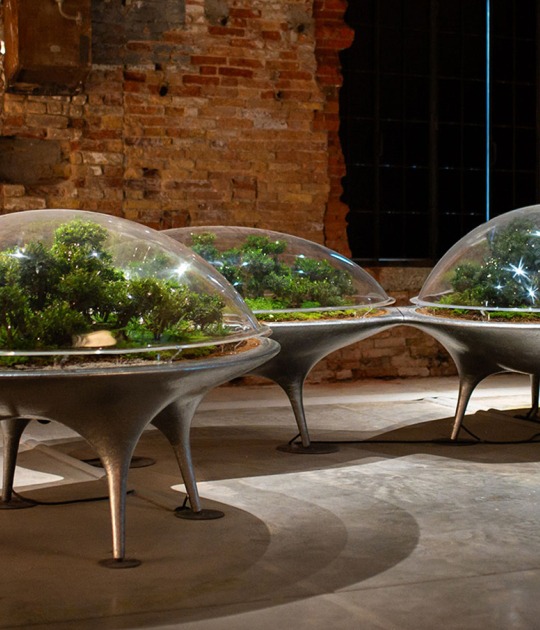Entanglement's speech also uses thermography, a technique that makes it possible to capture the temperature of a body from a distance, without the need for physical contact. Using this method, the installation will show how human activity at the Venice Arsenale during the Biennale generates a caloric impact on infrastructures associated with data production in Ireland.
Description of project by ANNEX
Our everyday lives are becoming increasingly entangled with data technologies. The Irish Pavilion addresses the utopian fantasy of the Cloud, as a romantic metaphor: The cloud is material. By foregrounding the physicality of data infrastructure and its impact on the environment the pavilion hopes to both reframe how we understand data production and its impact on everyday life.
The 2021 Irish Pavilion exhibition, Entanglement, at the 17th International Architecture Exhibition of La Biennale di Venezia, will explore the materiality of data, and the interwoven human, environmental and cultural impacts of communication technologies. The exhibition will highlight how data production and consumption territorialize the physical landscape, and examine Ireland’s place in the pan-national evolution of data infrastructure.
Curated by Annex, a collective of architects, artists, and urbanists, Entanglement responds to the theme selected by the curators of the Biennale Architettura 2021, How will we live together?. The exhibition aims to raise awareness about the materiality of the global internet and Cloud services, which is interwoven with the Irish landscape - made manifest through the vast constellation of data centres, fibre optic cable networks, and energy grids that have come to populate its cities and suburbs over recent decades.
Ireland plays a significant historical role in the evolution of global communications and data infrastructure. In 1866, the world’s first transatlantic telegraph cable landed on the West coast of Ireland. In 1901, the inventor of the radio Guglielmo Marconi transmitted some of the world’s first wireless radio messages from Ireland across the Atlantic Ocean to Newfoundland. Today, Dublin has overtaken London as the data centre hub of Europe, hosting 25% of all available European server space. And by the year 2027, data centres are forecast to consume a third of Ireland’s total electricity demand.
Entanglement draws from both contemporary and historical data storage artefacts as building blocks to form the structure of the pavilion. These artefacts are assembled in a campfire formation, referencing this primitive architectural space where early human civilisations formed alliances, built social networks and eventually developed complex societies. The pavilion asserts that from the burning of campfire logs to the management of waste heat generated by contemporary data infrastructure, the production and distribution of information is intrinsically connected to the production and distribution of heat.
By foregrounding these thermodynamic processes as a link between the architectures of the campfire and the data centre, the pavilion speculates on the relationship between these forms and how diverse communities converge around them in the past and into the future. Entanglement invites its audience to experience this thermal logic themselves through real-time thermographic imaging technologies that juxtapose key sites associated with data infrastructure in Ireland with traces of human activity in the Arsenale.
These complex series of energy-intensive thermal transformations in the pavilion presents an immersive and performative visitor experience from illustrating the extent to which people are producing, consuming and disseminating data across the globe, to bringing transparency to the local and planetary scale of data infrastructure networks; for example, how a Facebook ‘like’ in Malaysia can trigger the emission of heat from a server on the outskirts of Dublin.
Annex is an international multidisciplinary research and design collective, comprised of a core team of architects, artists, and urbanists, whose work operates between and beyond the subject areas of computer science, gaming platforms, technology and public space, data centres, sensor technology, and large technical systems. Members include Sven Anderson, Alan Butler, David Capener, Donal Lally, Clare Lyster and Fiona McDermott.
The pavilion has the support of: Culture Ireland; Arts Council of Ireland; Department of Heritage, Culture and the Gaeltacht; Royal Institute of Architects Ireland; TU Dublin School of Creative Arts; TU Dublin Graduate School of Creative Arts and Media; Trinity College Dublin; CONNECT Research Centre for Future Networks and Communications; University of Illinois at Chicago, Creative Activity Award; Valentia Slate, Office of Public Works and Green on Red Gallery.

























